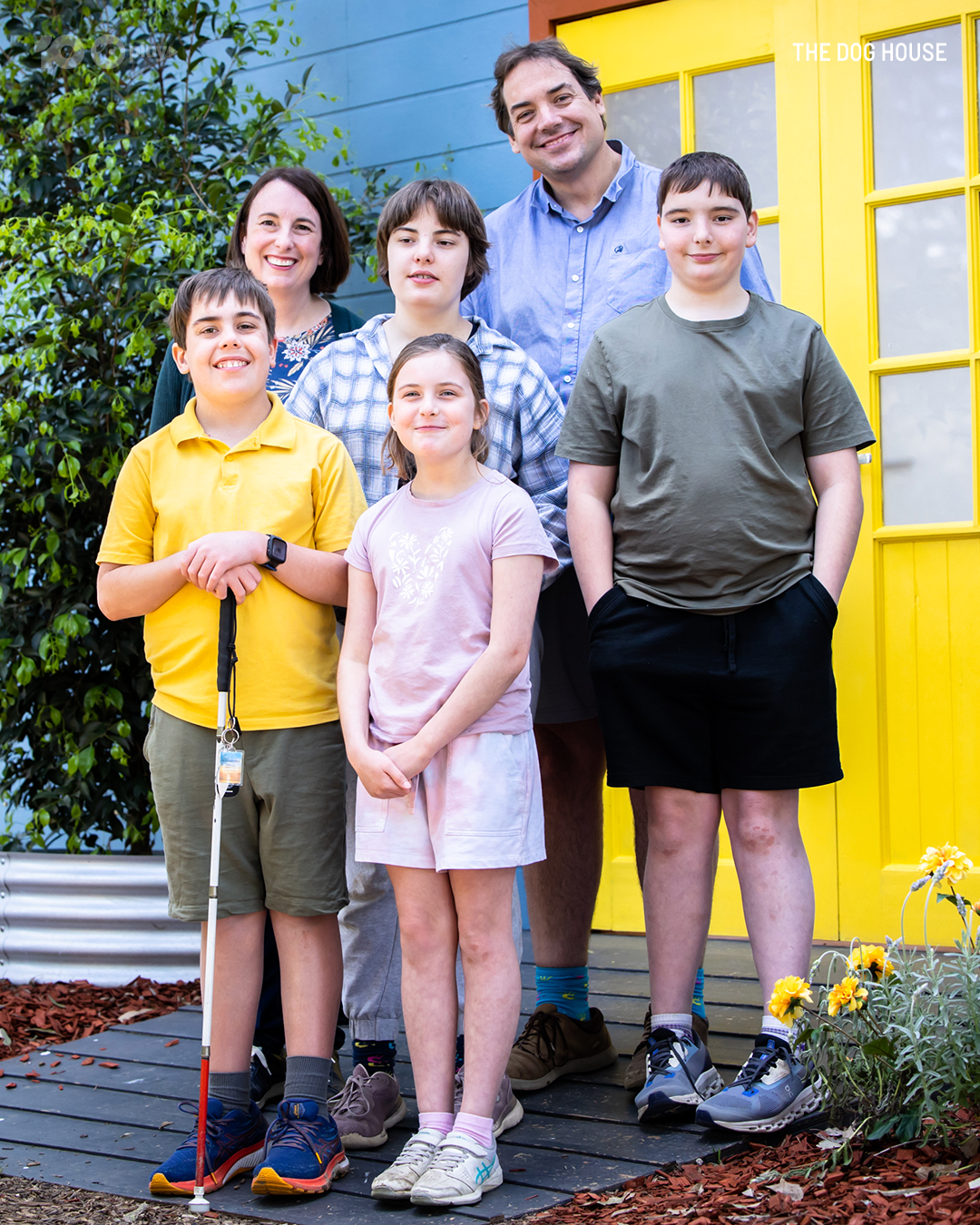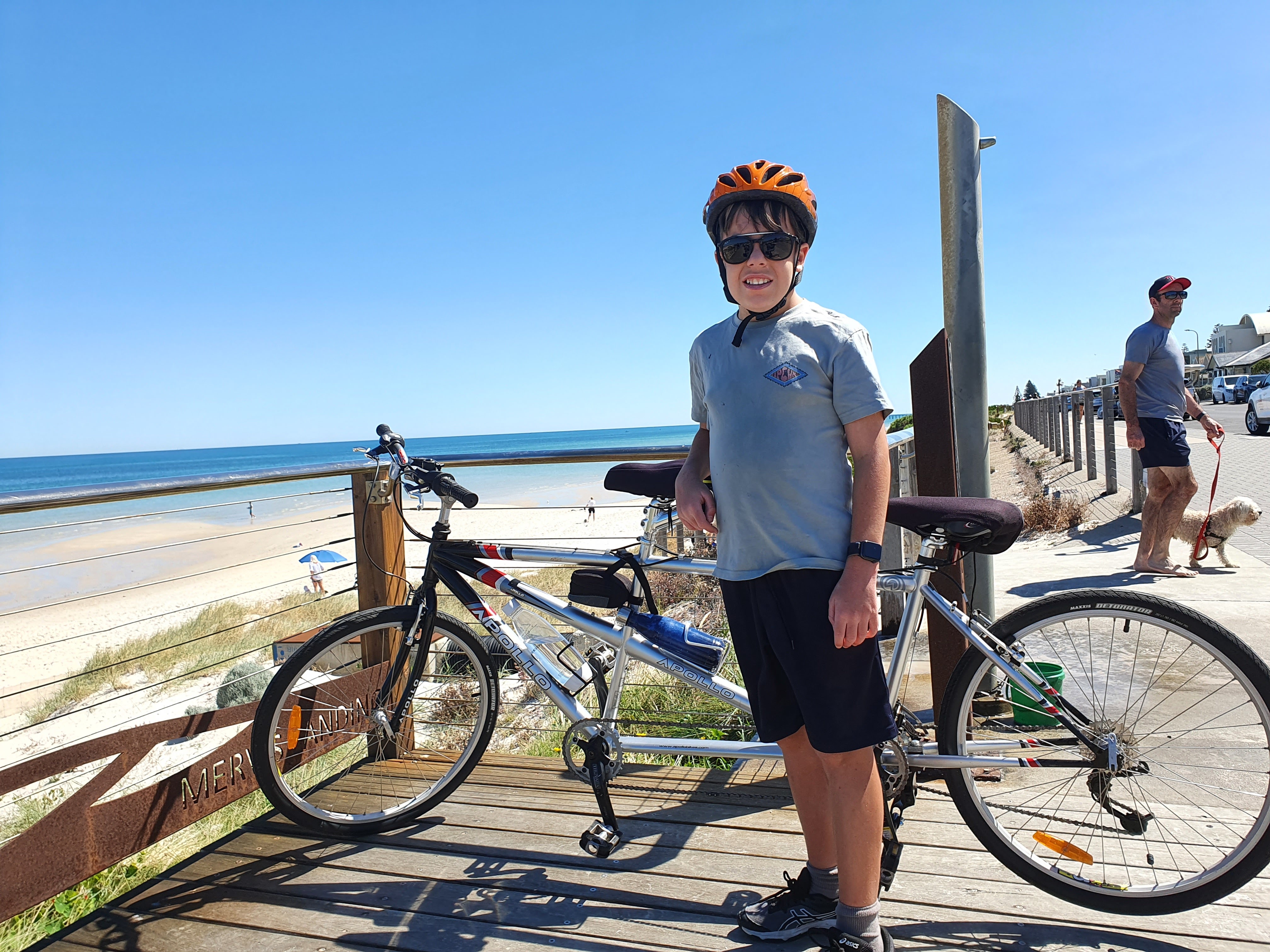Alexander's Story - By Emily (Mum)
In 2008, my husband Mark and I were so thrilled to find out we were expecting twins!
Harriet and Alexander (Alex) were born right on time. We felt so lucky to have two babies, and we spent the first few weeks shocked at how difficult babies could be! We had read all the books, written up the schedule, and couldn’t see why our babies wouldn’t adhere to it!
At 10 weeks old, my cousin noticed a birthmark on Alex's knee. I had never heard of cafe-au-lait spots, and was surprised to see something new on his skin. It was light brown and quite large, covering most of his knee. At that stage no-one thought much of it, but we did have a friend visiting who was training to be a GP at the time.
She said, “Oh, that’s a cafe-au-lait spot. If you have lots of them, it can mean you have a condition called neurofibromatosis”.
But she reassured us that having one cafe-au-lait spot was quite normal.
 Over the next couple of days Alex developed lots more spots around his armpits and on his torso. Of course, I googled neurofibromatosis (NF) and got more and more terrified.
Over the next couple of days Alex developed lots more spots around his armpits and on his torso. Of course, I googled neurofibromatosis (NF) and got more and more terrified.
By the time we took him to a GP a few days later, I was in a state of panic as I knew he satisfied at least one of the criteria for NF. He had more than six cafe-au-lait spots that were relatively large.
From this point on things got a bit confusing. The GP told us quite different information. She had never seen a patient with NF and didn’t suspect that Alex had it. However, at my insistence she referred us to a pediatrician.
Again, the pediatrician was unsure, he didn’t think Alex had NF either. He was too active and had started learning to roll.
He said the cafe-au-lait spots could just be spots, nothing to worry about. I couldn’t get what I had read out of my head - how could two doctors be telling me there was nothing to worry about, when it looked to me that he satisfied one of the most important criteria for an NF diagnosis?
These types of appointments went on for quite some time. We moved to Melbourne for work, and a GP there told me that I shouldn’t pursue it either. He suggested a diagnosis of NF would worry me too much, require complicated investigations and that it was better to just leave things as they were.
He was a typical developing baby, with a few spots - that’s all.
For a first-time mother this was a difficult position to be in. A lot of people considered that I was overly anxious, and some (not all) family members believed I had postnatal depression and needed to stop worrying.
To not have a diagnosis one way or the other is a rollercoaster emotionally. It would have helped enormously if we could have had genetic testing at that early point to check for NF, but it was never offered.
Eventually we got referred to an NF clinic in Melbourne, by now Alex was 18 months old. He had now developed two criteria on the list - underarm freckling plus the cafe-au-lait spots. This gave him a formal diagnosis of neurofibromatosis type 1 (NF1). In some ways it was a relief to have the diagnosis. Of course we had hoped he’d be a rare case of a child with cafe-au-lait spots and nothing else, but at least knowing it was NF1 meant we knew what to look out for, and what to tell the doctors now.
Apart from that, he was a very typical child, physically slower to develop than his twin sister, but a cheerful and charming toddler, always chatting up older ladies in the supermarket!
Towards the end of Alex’s first year, I started to notice a small lump on his forehead. Initially it only appeared when he frowned, so I didn’t mention it to anyone thinking maybe I was imagining things. As the years went on it became quite a prominent lump, and people were always asking us whether he had bumped his head. In fact, it was a plexiform neurofibroma. At five, Alexander had some very successful craniofacial surgery to debulk it, and to this day it remains quite small and not very noticeable.
By the time Alex was 6 we thought we were over the worst of the NF complications. He'd had perfect eye examinations every year, and his plexiform neurofibroma had been debulked and didn’t appear to be causing any major issues. We started to relax….
We welcomed two more beautiful children over this time, but Alex remains the only person in our family to have NF.
It came as a complete shock to us when Alex failed a regular eye test at age 6. One of his eyes was unable to identify any letters on the chart. We hadn’t noticed, he had one functioning eye which had taken over, so it simply wasn’t obvious. Looking back, we'd thought he was clumsy, occasionally bumping into things, and knocking things over, but we hadn’t considered vision loss being the reason.
Failing the vision test led to an MRI, which revealed a very large tumour in the chiasm where the optic nerves cross over. Within a week, he had an operation to fit for a port-a-cath and a 12-month chemotherapy regime started.
We were floored at the speed with which things could change, particularly as an MRI from 18 months earlier had shown him to be completely clear of tumours.
Luckily, chemotherapy was mild on the side effects and Alex was able to attend school most of the time.
Initially, we didn’t consider Alexander to be vision impaired. He was still able to read, get around, and see the board at school. Unfortunately, between chemotherapy regimes in 2020, when Alex was 11, the tumour had a rapid growth spurt and was now impacting his dominant eye.
He became legally blind from that point and was unable to do many things that he’d previously enjoyed such as reading, cooking, walking to the shops by himself, and riding his bike. This was a particularly scary time as he seemed to be losing vision by the day, and we really didn’t know where it would end up.

We made the decision to take Alex out of school and send him to a specialist vision school, where he could learn braille, how to use a cane, and work out how to use a computer again with screen reading software.
Now, at almost 14-years-old we’ve continued to have chemotherapy and surgery on and off over the years. Each time the tumour has responded well to the treatment, but bounced back as soon as the treatment has stopped.
Alex has had to get used to many uncomfortable and regular procedures. We're at the hospital so frequently that Alex used to give handmade trophies to the best performing nurses!
Unexpectedly changing schools has been great for Alex. We were unsure about taking him out of a mainstream school, but it’s been such a blessing that has enabled him to make new friends in the vision impaired community. He now joins in on activities such as blind sports (golf, cricket and tennis) and is even a member of the school rock bank.
Alex is currently off treatment, but at any time this may need to be reassessed. His eyesight is variable, even day-to-day. Sometimes the text size he can read in the morning will change by the afternoon. It’s really anyone’s guess where his vision will end up and what the tumour will do next.
The other kids have adapted reasonably well to having a sibling with a significant vision impairment. Harriet, Alex’s twin, has been a wonderful support for him, even during the scary times when he was losing vision rapidly. She always cheered him up, treated him as if everything was completely normal and never acted in an older or more responsible way towards him, he would have hated being “mothered” by her.
The younger kids have felt the lack of attention from us when Alex’s been sick, and that’s been hard for my husband, Mark, and I to manage. Fortunately, things are more stable now, and he’s not the centre of attention anymore!
Mark and I have got used to the uncertainty of NF - obviously we’re hoping for stability and good health in the future, but we’re better prepared than we were in the beginning and we know we have lots of good doctors around us, and the possibility of more targeted treatments being available. Fingers crossed for a healthy 2023!
By Emily.